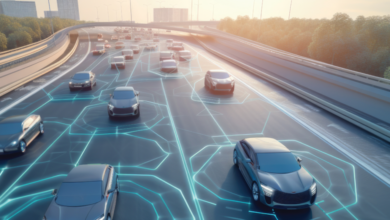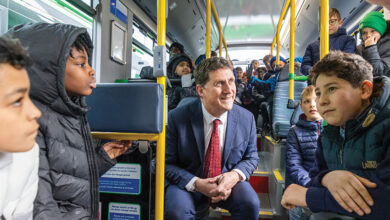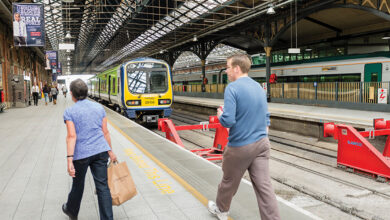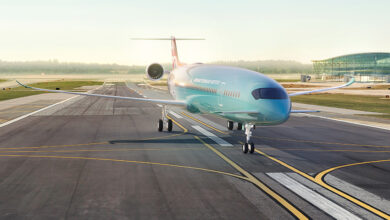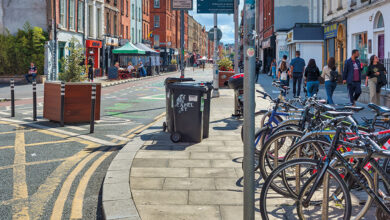Connecting Ireland
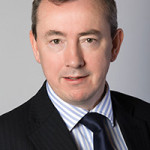 Bus Éireann Chief Executive Martin Nolan reviews the scale and characteristics of its network and emphasises how its services can help to cut down on congestion and meet the challenge of helping people travel in all parts of the State.
Bus Éireann Chief Executive Martin Nolan reviews the scale and characteristics of its network and emphasises how its services can help to cut down on congestion and meet the challenge of helping people travel in all parts of the State.
With 10,000 people involved in the daily delivery of our services, Bus Éireann is itself a very large and substantial company. We facilitate 81 million passenger journeys per year – until recently the same number of passengers as Ryanair – and travel over 150 million kilometers per annum across 6,300 routes.
Essentially, Bus Éireann offers three main products.
Firstly, a public service contract with the National Transport Authority (NTA) where we’ve met all the targets for the first five years; the contract was recently renewed for another five years. It has been well-publicised that 10 per cent of our business will be tendered in two years’ time – in Waterford, Kildare and Portlaoise – but there is plenty of growth potential we where can turn the 90 per cent into 100 per cent again, as the economy recovers.
We’ve had a difficult time in the recent recession, where our starting position was one of the lowest subventions for public transport in Europe. This has subsequently decreased by 30 per cent in line with a 13 per cent staff reduction – including 20 per cent fewer back office staff (partly achieved through new technology). We have retained as many services as possible and ensured our financial viability.
Secondly, our Expressway inter-city services are fully commercial and competitive. Making a profit and reinvesting in services is essential in this area and the rebranding to red buses has been very successful. Around 150 buses are involved and we’ll have 60 new vehicles in service over the next 12 months, alongside a brand new reservation system and website. All new buses have Wi-Fi and travel sockets to meet the needs of the modern business traveller.
Thirdly, we carry 112,000 schoolchildren to and from school every day. Ninety per cent of the service is subcontracted, thus making us the largest employer in Ireland’s private bus industry. This is a large logistical and procurement exercise and we also carry 9,000 children with special needs every day – a major exercise and a major responsibility.
In rural Ireland, with the lower population numbers, it’s a different type of service than in a capital city. Planning decisions over the last 40-50 years have aimed to put a well-functioning transport system in place, which can only be delivered by bus.
Safety across all our services is our number one priority. Quality follows on from that and with some 80 per cent of our workforce focused on the customer, staff morale is hugely important. We’ve come through the recession and now have additional funds being provided for extra services and new and replacement vehicles, including 150 new vehicles for the state transport services.
The return of congestion represents a major challenge. Dublin is fairly well populated but house prices in the city will rise, meaning that people will move beyond the M50 boundaries. However many will need to travel back into the capital for work.
Cities can’t survive without public transport and public transport needs to have an advantage over the car. In Dublin, a lot of our buses now travel down the motorways where driving on the hard shoulder is not permitted due to the speed differential. One solution could be to have motorways having different speed limits at different times of the day but, ultimately, cars can be stuck in traffic but buses cannot.
A speed of 21-23kph is needed to run a public transport system but in the early 2000s we were down to 11kph in some of the provincial cities – a situation which cannot be allowed to happen again. At Bus Éireann, we have somebody in every corner of the country who knows how public transport works, knows the players in it and knows how to pull them all together.
As for the future, everyone understands that transport is critical for the economy and integrated networks work best where the scale and rationale exists. It’s important that we are not just focused on integration for a small number of people who are getting off a plane or a train; the people who live in the countryside are very important customers as well.
It is vital that we have hubs where local transport services meet. We need to have enough buses on inter-city routes serving the transport hubs, so that there is a proper public transport network. There is a risk of that market focusing on the larger towns and it is still vital to ensure that smaller settlements are served.
We’ll keep reducing the cost base to where it needs to be, in order to deliver a world class transport system. In terms of customer service, our new IT-based system is being put in place and an external company monitors social media on our behalf and also provides out of hours response cover. We already have a 90 per cent customer satisfaction rating and 92 per cent of our customers would recommend us to their friends.
Passenger numbers dropped by 20 per cent during the recession, and we do expect that it will take time for numbers to recover in the worst affected regions.
We’re involved in UITP (International Association of Public Transport) which is championing the concept of PTx2 to double the level of public transport by 2025. That requires four per cent growth per annum – an achievable figure – but the percentage of public transport use in provincial cities is relatively low and needs to improve through incentivisation.
Bus Éireann is also reliant on its working relationships and joined-up thinking with the NTA and An Garda Síochána. The bus industry is perhaps perceived as a poor relation to other modes of transport, but buses are going to solve the major gaps in transport. On the back of how the mind-set towards buses has changed in Dublin, we must give people a high quality service so that there is no reason not to come on board.
Website: www.buseireann.ie
Email: info@buseireann.ie
Call: (01) 836 6111
Twitter: @buseireann
Facebook: www.facebook.com/BusEireann

